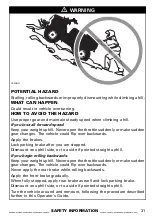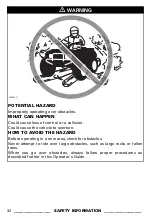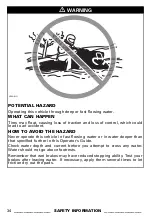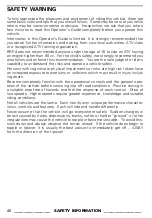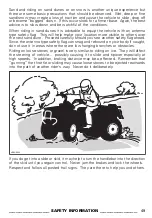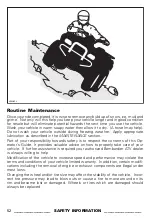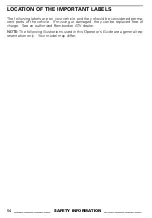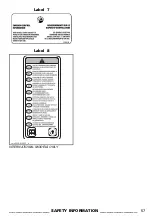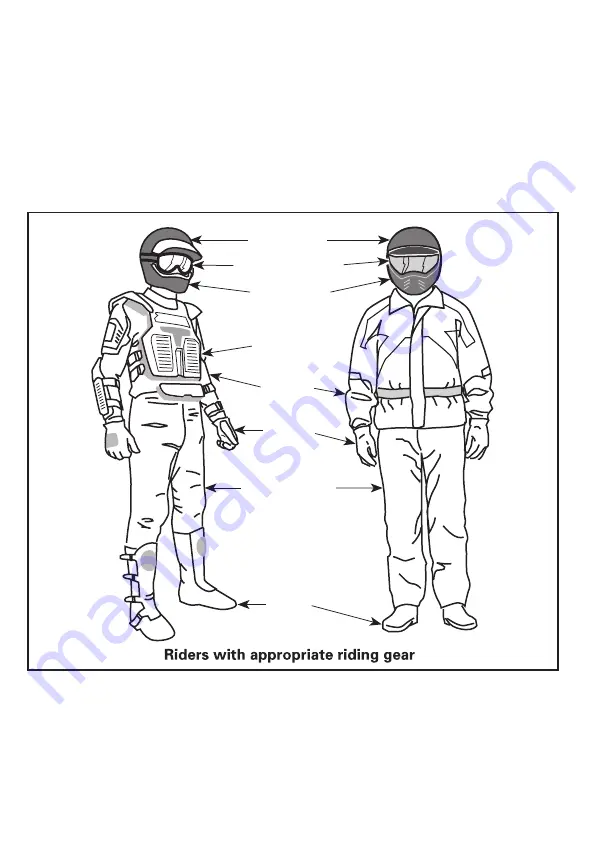
Clothing
Actual weather conditions should help you decide how to dress. However, it
is important that the operator always wear the appropriate protective clothing
and apparel, including an approved helmet, eye protection, boots, gloves, long
sleeved shirt and pants. This type of clothing will provide you protection from
some of the minor hazards you may encounter en route. Operator must never
wear loose clothing such as a scarf that may get entangled in the vehicle or on
tree branches and shrubs. Depending on conditions, antifogging goggles or sun
glasses may be required. Different colored lenses available for goggles or sun-
glasses help you distinguish terrain variations. Sunglasses should only be worn
during the daytime.
Boots
Long, sturdy
pants
Gloves
Long
sleeves
Rigid chin
guard
Eye protection
Chest
protector
V00A0RN
Approved
helmet
42
___________
SAFETY INFORMATION
___________
Summary of Contents for DS 250
Page 1: ......
Page 8: ...6 _______________________...
Page 11: ...SAFETY INFORMATION ____________ SAFETY INFORMATION ____________ 9...
Page 57: ...1 8 7 5 3 2 6 4 vmo2006 013 004_a ____________ SAFETY INFORMATION ___________ 55...
Page 60: ...58 ___________ SAFETY INFORMATION ___________...
Page 61: ...VEHICLE INFORMATION _____________________ 59...
Page 63: ...Engine Identification Number Location vmo2006 014 005_a TYPICAL _____________________ 61...
Page 68: ...12 8 9 16 6 7 1 5 11 14 17 3 4 6 7 4 2 5 15 13 10 vmo2006 013 005_a 66 ______________________...
Page 98: ...96 ______________________...
Page 99: ...MAINTENANCE INFORMATION _____________________ 97...
Page 127: ...WARRANTY _____________________ 125...
Page 133: ..._____________________ 131...
Page 135: ..._____________________ 133...
Page 136: ...134 _____________________...
Page 138: ......




